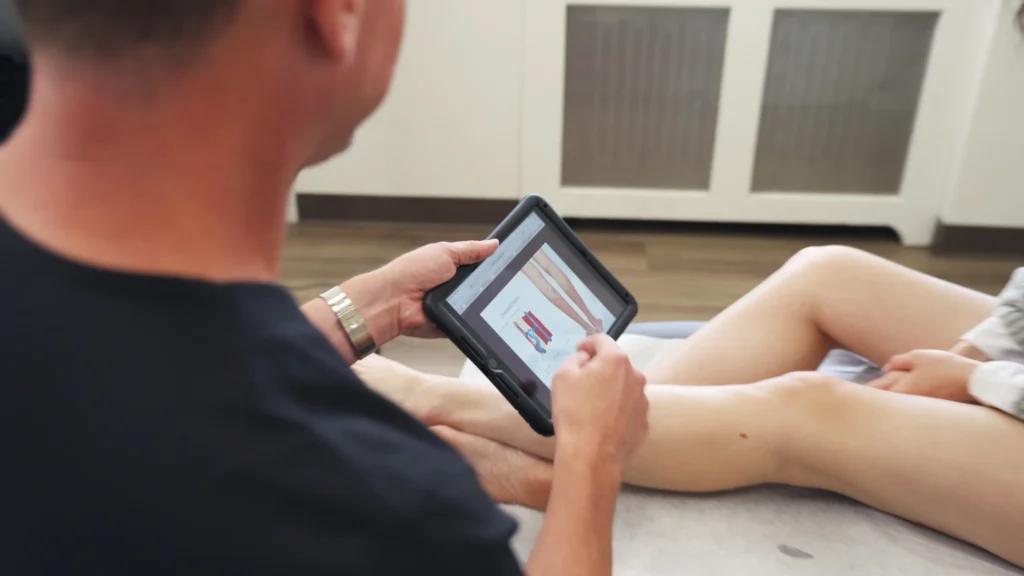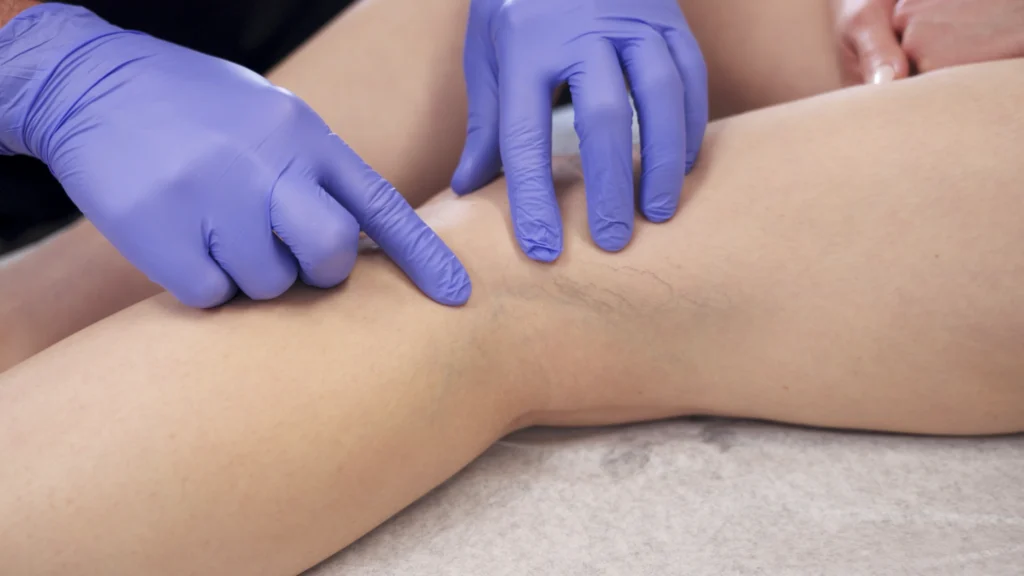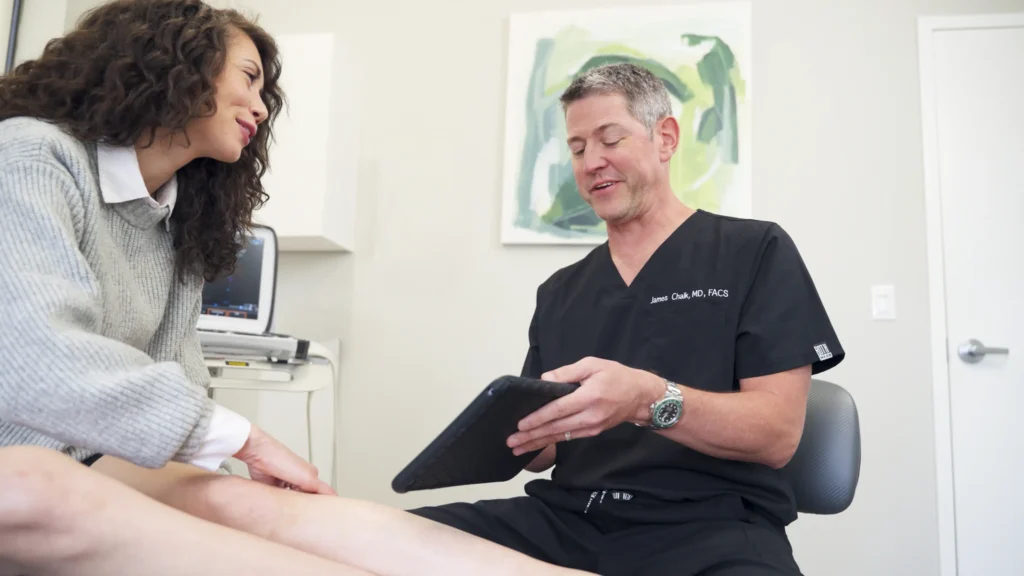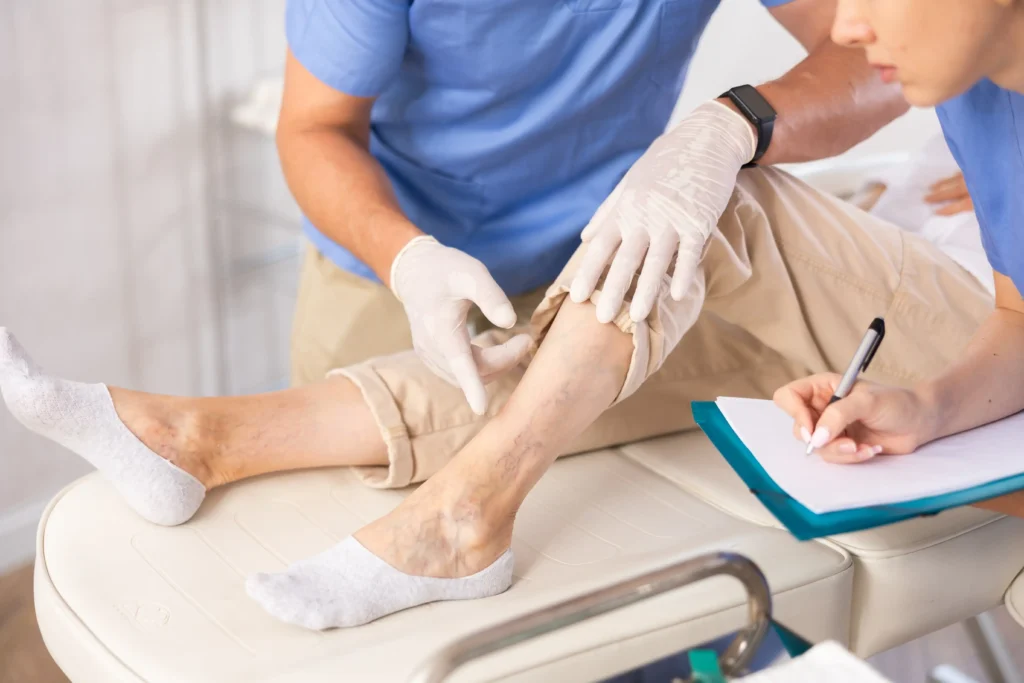What is Venous Insufficiency? Is it Dangerous for You?
You’re standing for long hours at work, and by the time you get home, your legs feel heavy, swollen, or even painful. Perhaps you’ve noticed some visible veins or experienced varicose vein pain that seems to worsen each day. These may be early warning signs of a condition called venous insufficiency, a chronic issue that impacts blood flow in the veins, particularly in the legs. You might think of it as just a part of getting older or something you can ignore, but venous insufficiency can lead to more significant health problems if untreated.
At Vein Treatment, we’re here to guide you through understanding this common yet often overlooked condition. Our board-certified vein doctors at our vein treatment clinics across New York, Long Island, California, Maryland, and New Jersey specialize in minimally invasive vein treatments to help manage and alleviate venous insufficiency. We believe that by understanding what venous insufficiency is, what causes it, and the options available for treatment, you can take proactive steps to safeguard your health and find relief.
What is Venous Insufficiency?
Venous insufficiency is a condition where the veins in your legs fail to return blood back to the heart effectively. In healthy veins, small valves work to push blood upward, fighting gravity. But when these valves weaken or become damaged, blood begins to pool in the legs instead of flowing back to the heart. This pooling of blood leads to symptoms such as swelling, aching, and visible veins. Left untreated, venous insufficiency can progress and become increasingly painful, sometimes leading to serious health risks.
What Causes Venous Insufficiency?
Understanding what causes venous insufficiency can help you identify your risk level and take preventive action. Several risk factors contribute to venous insufficiency:
- Family History of Vein Disease: If your parents or close family members have had issues with veins, you’re more likely to experience venous insufficiency. Genetics can make vein walls or valves weaker, increasing your risk.
- Aging: As you age, your veins and their valves lose elasticity, making it harder for blood to travel against gravity. This is why venous insufficiency is more common in people over 50.
- Pregnancy: Pregnancy puts additional pressure on the veins in your legs. The increased blood volume and hormonal changes can weaken vein walls and valves, sometimes leading to venous insufficiency, especially with multiple pregnancies.
- Obesity: Extra weight adds significant pressure to the veins in your legs, increasing the risk of venous insufficiency.
- Prolonged Standing or Sitting: If you’re on your feet or sitting for extended periods without much movement, it’s harder for blood to flow freely. This lifestyle factor increases your risk of developing venous insufficiency.
Common Signs and Symptoms of Venous Insufficiency
Venous insufficiency often begins subtly, but several telltale signs can alert you to the condition. If you notice any of the following symptoms, it may be time to consult a vein specialist:
- Swelling in the lower legs or ankles
- Heavy or aching sensation in the legs, especially after standing
- Skin discoloration around the ankles
- Development of spider or varicose veins
- Itching, tingling, or burning sensation
- Open sores (ulcers) near the ankles
- Nighttime leg cramps or restlessness
- Thickening or hardening of the skin around the ankles
Is Venous Insufficiency Dangerous?
Untreated venous insufficiency can lead to various complications, some of which may pose serious health risks. It’s essential to address symptoms early to prevent progression.
- Varicose Veins and Spider Veins: Varicose veins and spider veins can cause discomfort, itching, and an unsightly appearance. While spider veins are often cosmetic, they may indicate underlying venous insufficiency, which is a medical issue.
- Leg Ulcers: If blood continues to pool, pressure builds up within the veins, leading to skin breakdown. This breakdown can cause venous ulcers—open sores that are painful and challenging to heal without medical intervention.
- Deep Vein Thrombosis (DVT): Venous insufficiency increases your risk of developing blood clots, which can lead to a condition called deep vein thrombosis. DVT is a serious complication that can become life-threatening if the clot travels to the lungs.
- Chronic Venous Stasis: Chronic venous stasis is a severe condition where poor blood flow leads to persistent swelling, inflammation, and skin changes. Over time, these changes can be permanent, affecting your skin’s texture and tone.
- Bleeding and Infections: In cases where varicose veins are prominent, even a minor bump or injury can cause bleeding. The affected area may also be more susceptible to infections.
Minimally Invasive Vein Treatments
At Vein Treatment, we offer a range of minimally invasive vein treatments to relieve venous insufficiency symptoms effectively. These vein treatments have minimal downtime, so you can return to your regular routine quickly:
- Endovenous Laser Ablation (EVLA): Uses laser energy to close the faulty veins.
- Radiofrequency Ablation (RFA): Applies heat to collapse the problematic vein.
- VenaSeal: Uses a medical adhesive to seal the diseased vein.
- ClariVein: Combines mechanical and chemical methods to treat the vein.
- Ambulatory Phlebectomy: Removes large varicose veins through small incisions.
FAQs
What causes spider veins?
What causes spider veins? Spider veins occur when small blood vessels become dilated close to the skin’s surface. They may be caused by genetics, hormonal changes, sun exposure, or prolonged standing.
What are the drawbacks of varicose veins surgery?
Traditional varicose vein surgeries, such as vein stripping, can be invasive and involve a longer recovery time compared to minimally invasive options like endovenous laser or radiofrequency ablation. Minimally invasive treatments are more effective for most patients.
Are spider veins and varicose veins covered by insurance?
Most vein treatments are covered by medical insurance if they are deemed medically necessary. While spider veins are generally considered cosmetic, the treatment for their root cause, such as venous insufficiency, is covered. If you’re diagnosed with venous insufficiency, treatments like sclerotherapy may also be covered by insurance.
Do I need a vein specialist or a general doctor?
A vein specialist, or phlebologist, has extensive training in diagnosing and treating venous conditions. They use advanced imaging techniques and minimally invasive vein treatments that general doctors may not provide. Our vein clinics are staffed by Ivy League-educated and board-certified vein specialists, giving you access to top-tier care.
Is venous insufficiency dangerous if untreated?
Yes, untreated venous insufficiency can lead to complications like leg ulcers, blood clots, and chronic skin changes. Early diagnosis and treatment help prevent these issues.
Does vein treatment require downtime?
Most minimally invasive vein treatments involve little to no downtime, allowing you to resume regular activities shortly after the procedure. Our vein doctors will advise on any post-treatment care you might need.
Visit Your Nearest Vein Center
Venous insufficiency can impact your daily life and long-term health, but it’s not something you have to endure. By recognizing the symptoms early and exploring your treatment options with Vein Treatment, you can take control of your health and find lasting relief. Our experienced, board-certified vein doctors are committed to providing compassionate, effective care at our vein treatment clinics in New York, Long Island, California, Maryland, and New Jersey.
For more information on our services, contact us to request insurance verification and determine which vein treatments are covered under your plan. Explore our vein center locations to learn about our vein treatments and how we can help you on your path to healthier legs.








